Battlefield for major political forces
PTI, PPP set to go head to head against each other in all three constituencies
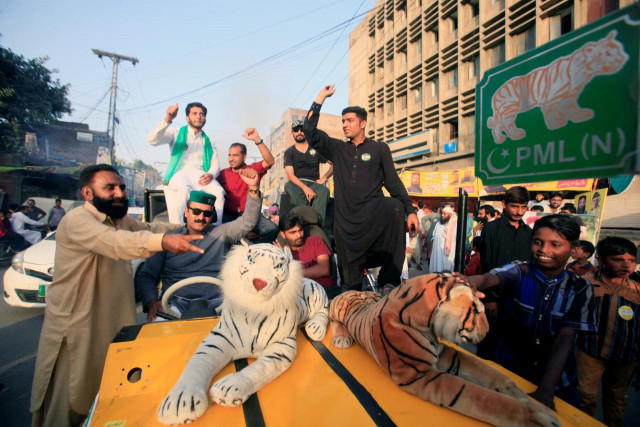
Supporters of the PMLN political party cheer on their candidate outside a polling station in Lahore, Pakistan. PHOTO: REUTERS
The Pakistan Tehreek-e-Inasf (PTI) — which had won one of the two national assembly seats in the capital during the May 2013 elections, is hoping to at least double its tally by bagging two of the three seats up for grabs in the city this time around.
The Pakistan Peoples Party (PPP), which may not be regarded as an out and out favourite for all the three seats up for grabs in the general elections, could spring a surprise on at least one of the national assembly seats where its influential candidate is aggressively campaigning against the main rivals from the PTI and the Pakistan Muslim League-Nawaz (PML-N) candidates.
On the remaining two NA seats in the federal capital, the real contest appears to be pitched between the PTI and the PML-N.
NA-52
The first seat in the capital largely comprises of rural and suburban areas of the Islamabad Capital Territory (ICT) including Alipur Farash, Kuri, Pind Begwal, Lohi Bher, Nilour and the adjoining belt.
The area, known as NA-49 before the delimitations earlier this year, was clinched by PML-N’s Dr Tariq Fazal Chaudhry in the May 2013 elections, bagging a whopping 94,106 votes. He had blown away the 24 other contestants from the constituency with PTI’s Ilyas Meharban coming in second with 57,383 votes.
In fact, Chaudhry has won this constituency for the past two successive elections, narrowly beating the PPP’s Syed Nayyer Bukhari to the seat in 2008.
However, his position is believed to have weakened over the past five years owing to his performance as the Minister for Capital Administration and Development Division (CADD).
However, Chaudhry is accused of remaining oblivious to the plight of his constituents and remaining detached from his voters.
In what is yet another setback for Chaudhry, parts of Bhara Kahu, where Chaudhry enjoyed a strong support base, has now been shifted from NA-52 to NA-53 in the delimitation exercise.
This time, he is facing competition from 11 candidates. His primary opponents, though, are PTI’s Raja Khurram Nawaz and PPP’s Afzal Khokhar.
A survey of this area suggests that the PPP is eyeing to cash in on internal differences between the PTI and an apparent lack of development during the recently-concluded tenure of the PML-N.
PML-N looks to enter Karachi’s political scene through NA-249
PTI’s Mehrban, who had given a good account of himself in the 2013 elections, was disregarded by the PTI in favour of Nawaz. The move raised eyebrows amongst local politicians and party supporters who fear that Mehrbans’ supporters, infuriated at him being denied a ticket, may dent Nawaz’s vote bank.
But politics in NA-52 is largely driven by the ‘biradri’ (clan or community) vote. Most of the residents of the area are Rajputs and Nawaz is hopeful that he would be able to tap into his clan connections to maximise his chances.
Senior political leaders from the area suggest that PPP’s Afzal, who hails from the influential Khokhar family and is the brother of senior PPP leader and former NA speaker Haji Nawaz Khokhar and notorious local Imtiaz Khokhar— alias Taji Khokhar, has been quite active, reaching out to several chairmen of the related union councils to win their support. He is also banking on the support of the Khokhar clan, present in heavily concentrated pockets in the constituency.
The election race in NA-52 is much more intense when compared to other constituencies of NA-53 and NA-54 since all the three main candidates hail from the constituency.
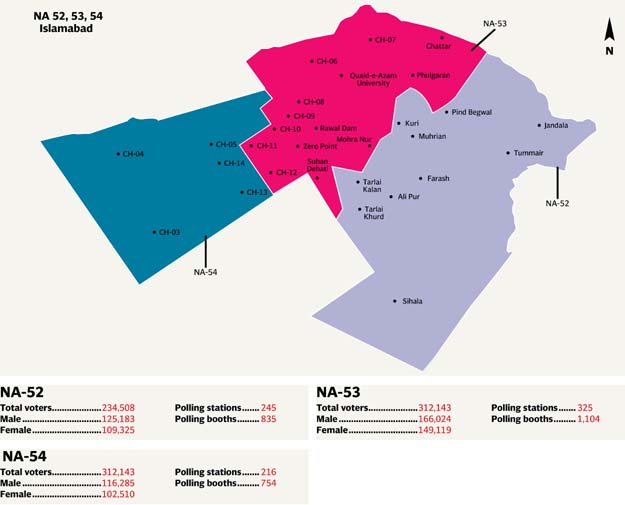
NA-53
While NA-52 is largely rural with a biradri clout having more weight in voting, NA-53 is almost the opposite.
The constituency comprises of some suburban areas such as Bhara Kahu, Bani Gala and most of the urban capital, including some of the poshest areas anywhere in the country.
Majority of the urban population of the Islamabad comprises of registered voters who prefer actively participating in electoral activities in the city.
This is one of the most ‘happening’ constituencies of Pakistan where PTI supremo Imran Khan is facing off against former premier Shahid Khaqan Abbasi. PPP’s Syed Sibt-e-Haider Bukhari, commonly known as Sibti Shah, is also a contender from NA-53 along with 31 other candidates.
Discussions with political pundits from the area suggest that Abbasi may be in a better position over his rivals in areas such as Bhara Kahu and the adjoining belt where members of Abbasi family have a large presence.
But, in city central — where he coincidentally camped for four months to protest against the government in 2014, Imran enjoys a strong public following.
In NA-250, MQM faces uphill task in retaining vote bank
Abbasi is struggling to attract public support in this area, primarily because he is seen as someone who had done little to respond to civic issues of the area and other public-interest matters in the federal capital when he was the premier.
A resident of the posh Sector F-7, he did little to address severe water shortages, inflation, rising crime rate and other issues.
In 2013, NA-53, then known as NA-48 (before delimitation) was secured by PTI’s Asad Umar. During his five-year stint as an MNA, Umar was fairly active, keeping in touch with his voters and played a key role in multiple legislations concerning the issues of the capital.
PPP’s Shah, on the other hand, has little chance of upsetting this fight. One reason for this is the serious allegations of land grabbing when his brother Nayyar Bukhari was the Chairman of the Senate.
With poor repute, the only thing Shah can claim over his competitors is that he is a local since Abbasi hails from Murree and is also contesting general elections there. Imran is contesting from five locations across the country including the metropolises of Karachi, Lahore, Bannu and Mianwali.
There are also a few interesting characters in the mix contesting this constituency including PTI splinter group leader Ayesha Gulalai and Awami Workers Party’s Ammar Rashid.
NA-54
This constituency is located on the fringes of the capital and is a mixed combination of main urban areas of the city, suburban and a rural belt which includes Golra, Shah Allah Ditta and villages.
Of the 28 candidates contesting this seat, the main competition is again between PTI’s Asad Umar, PML-N’s Anjum Aqeel and PPP’s Raja Imran Ashraf.
Umar enjoys strong support base in the urban parts of the constituency and will be eying a return to the assembly.
Aqeel is regarded a heavyweight in the rural areas of this constituency having previously served as an MNA from the same seat from 2008-2013.
Moreover, he is a local of Islamabad and belongs to a powerful family from Golra which puts him in a strong position.
However, he faces a strong challenge from Umar who is widely popular amongst the urban class of Islamabad. He also faces opposition from the powerful Gujar clan which is settled in the villages of NA-54.
With Chaudhry Ashraf Gujar joining PTI three years ago, Umar’s position has been further strengthened.
Reports suggest that powerful Pir family of Golra, the custodian of the revered shrine of Golra Sharif, is also backing Umar which is creating problems for PML-N’s Aqeel.
PPP’s Ashraf, who is the brother of another former prime minister, Raja Pervaiz Ashraf, lacks a solid political footprint in the constituency mainly because his family contests elections from Gujjar Khan, a tehsil of Rawalpindi district and lacks any significant following in Islamabad.
PPP insiders say Ashraf has not spent much time, money or energy in this election and expects little from the poll results.
“He just wants a solid entry from this area to promote his image. That’s it. To consider that Ashraf would give a tough time to candidates such as Aqeel and Umar is wishful thinking,” a PPP insider in the party’s main secretariat in the federal capital said.
Published in The Express Tribune, July 20th, 2018.


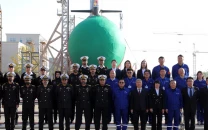
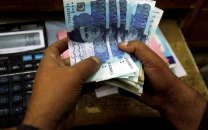


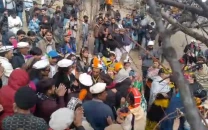












COMMENTS
Comments are moderated and generally will be posted if they are on-topic and not abusive.
For more information, please see our Comments FAQ